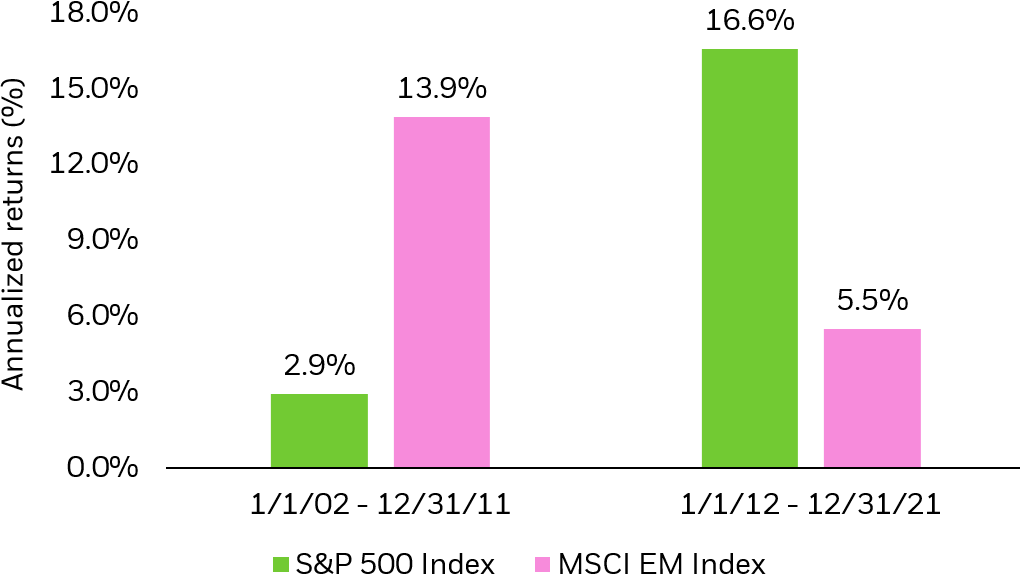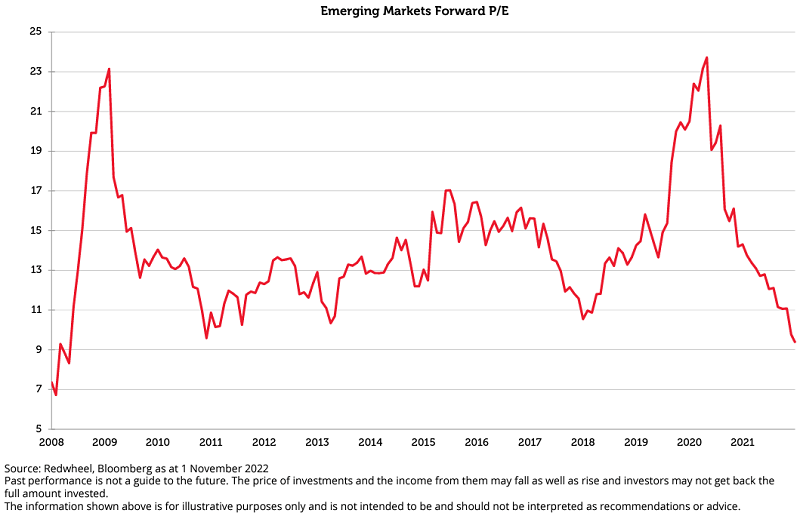Last year many of the emerging and frontier markets were the best performers in equity returns. However that is not the case this year. Year-to-date China’s Shanghai Composite, India’s Sensex, Brazil’s Bovespa, Mexico’s IPC All-Share, Chile’s Santiago IPSA are all down 3.3%, 7.3%, 0.2%, 3.2% and 1.1% respectively.But many developed markets are up nicely. The YTD returns of the S&P, DAX, CAC 40 and Spain’s IBEX 35 are 2.0%, 2.1%, 5.6% and 9.8% respectively. Some of the reasons for the poor performance of emerging markets are soaring inflation, rising interest rates, regulators clamping down on rampant speculation in equity markets, etc. In addition to emerging markets, frontier markets are also falling this year. Big crashes in Bangladesh shares have triggered wide-spread protests there.
Considering the facts above, should investors completely avoid emerging and frontier markets this year?. Absolutely not. Though the markets are falling in the short-term there are plenty of opportunities for the long-term investor. The consumer sector is one of the key areas that investors can focus on to invest in these markets. Consumption of goods and services is growing sharply in India, China, Brazil, Kenya, Nigeria, etc. A recent study by HSBC and Standard Chartered predicts that the share of global output for emerging economies is likely to grow while that of the U.S. and Europe will fall in the coming years. Accordingly, the GDP per capita for those countries is projected to increase faster than developed markets in the next 20 years with China’s per capita GDP rising over 220% (Source: Bloomberg BusinessWeek).
From an article in the Financial Post:
Rising disposable incomes, high savings rates and low credit penetration have made the emerging market consumer one of the most attractive themes for investors in recent years.
Since emerging markets are only at the beginning of their consumer credit cycle, the strong consumption growth witnessed during the past 20 years should continue to for some time.
While the population of emerging markets is more than 3.9 billion people – more than 80% of the global population – the market cap of consumer stocks in emerging markets is just US$500-billion, according to strategists at Bank of America Merrill Lynch. That compares to a market cap of US$4.7-trillion for consumer companies in the United States, Europe and Japan.
“Simply put, there is far more liquidity in the developed market consumer stocks,†they said.
One way to profit from the growth in consumer sector in emerging markets is to invest in developed market companies with high exposure to emerging markets. The strategists at BofA Merrill Lynch identified the following 22 large-cap companies that generated at least 30% of their 2009 sales from emerging markets:
[TABLE=873]



